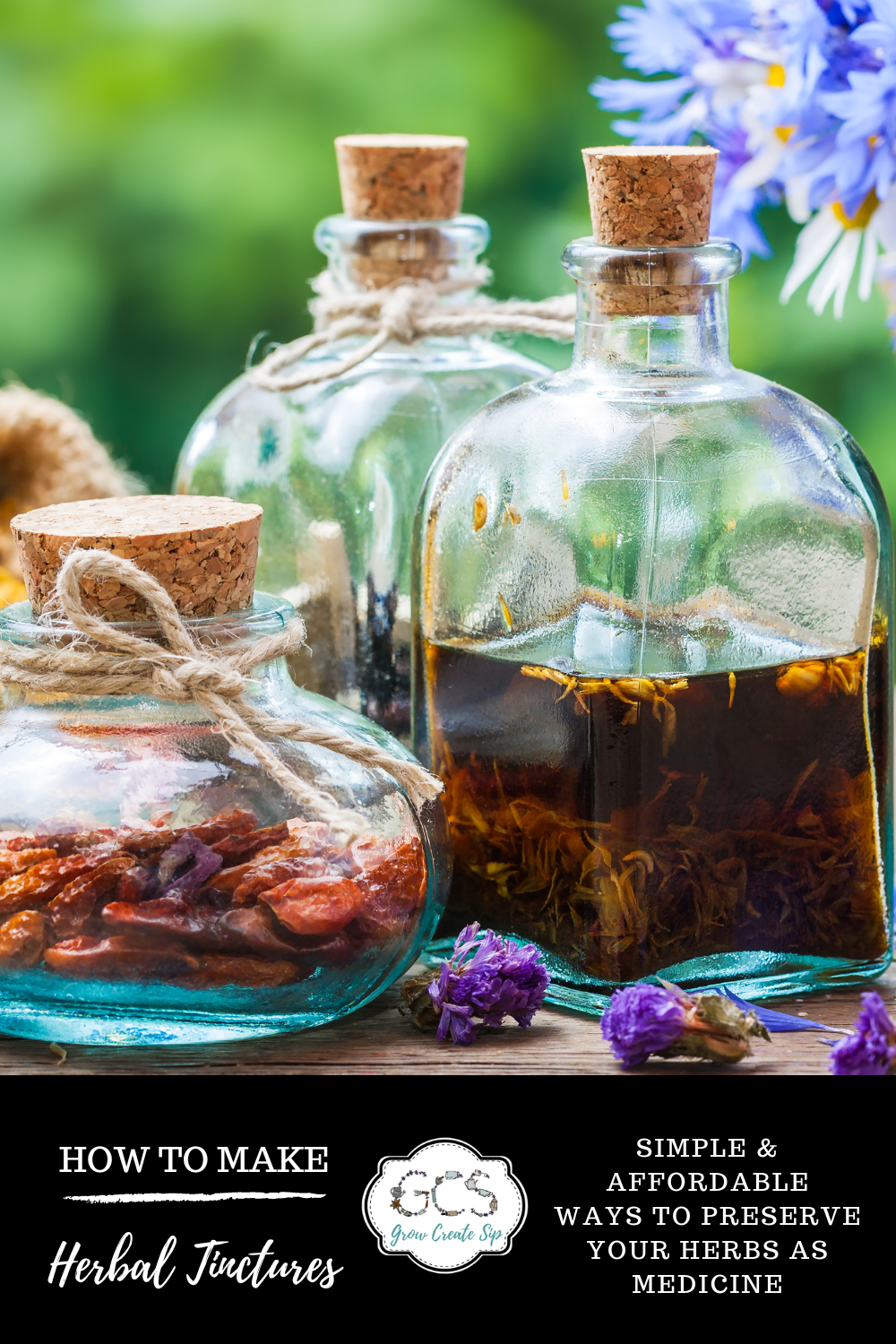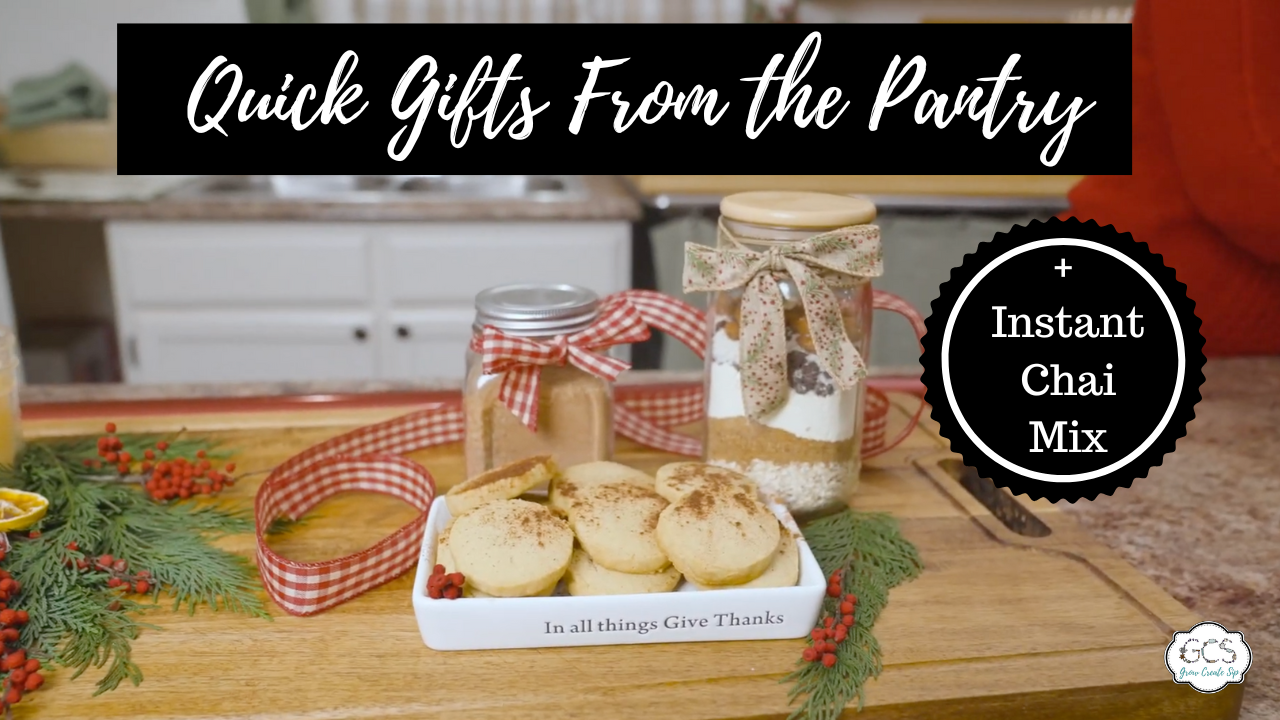Tincture Making and Crafting Your Own Tincture Recipes
Oct 03, 2023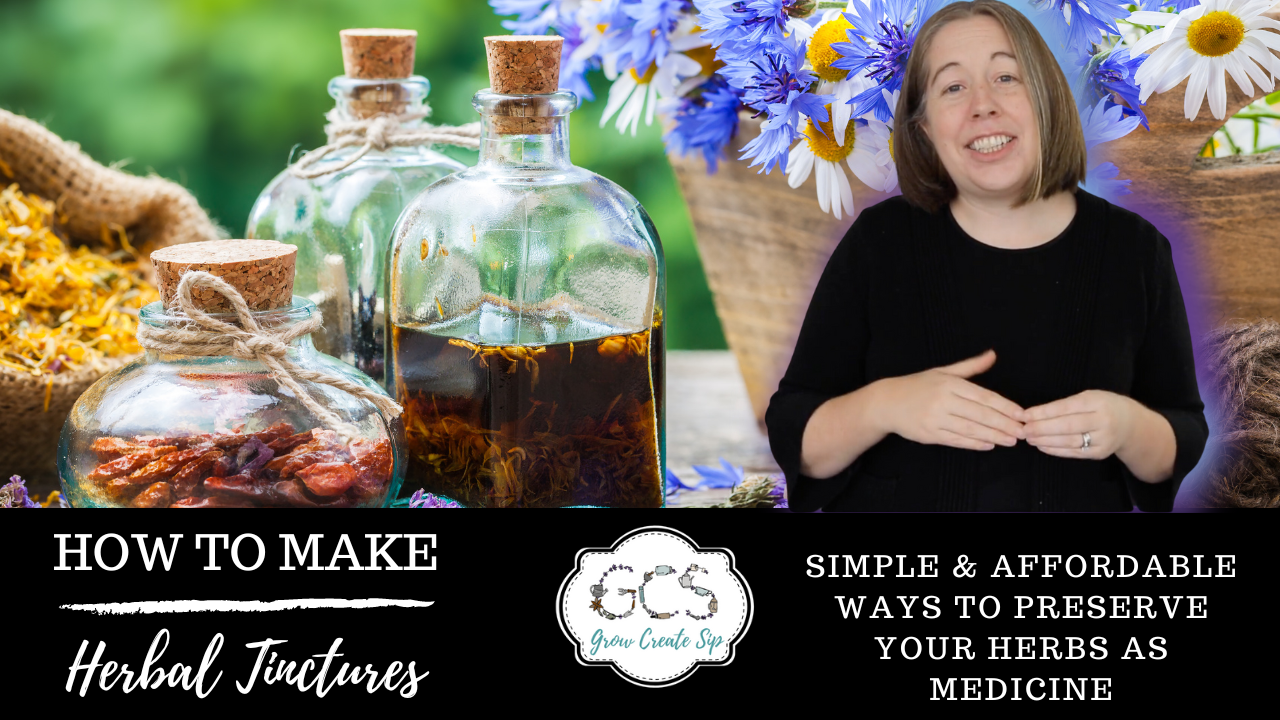
Tinctures are one of my favorite ways to use herbs in the home after herbal medicinal teas. They are simple to use for the home herbalist or caregivers wanting natural remedies for their families and loved ones. These concentrated herbal extracts offer a convenient and potent way to harness the healing properties of various plants that God made for our use.
In this in depth guide, we will explore the fundamentals of tinctures, step-by-step instructions for making your own, tips for choosing the right herbs, and recipes for common ailments. By making tinctures at home, you can ensure the quality and control the ingredients of these natural remedies, plus save money as you can make your own tinctures at home for pennies compared to what you pay for them at the health food store.
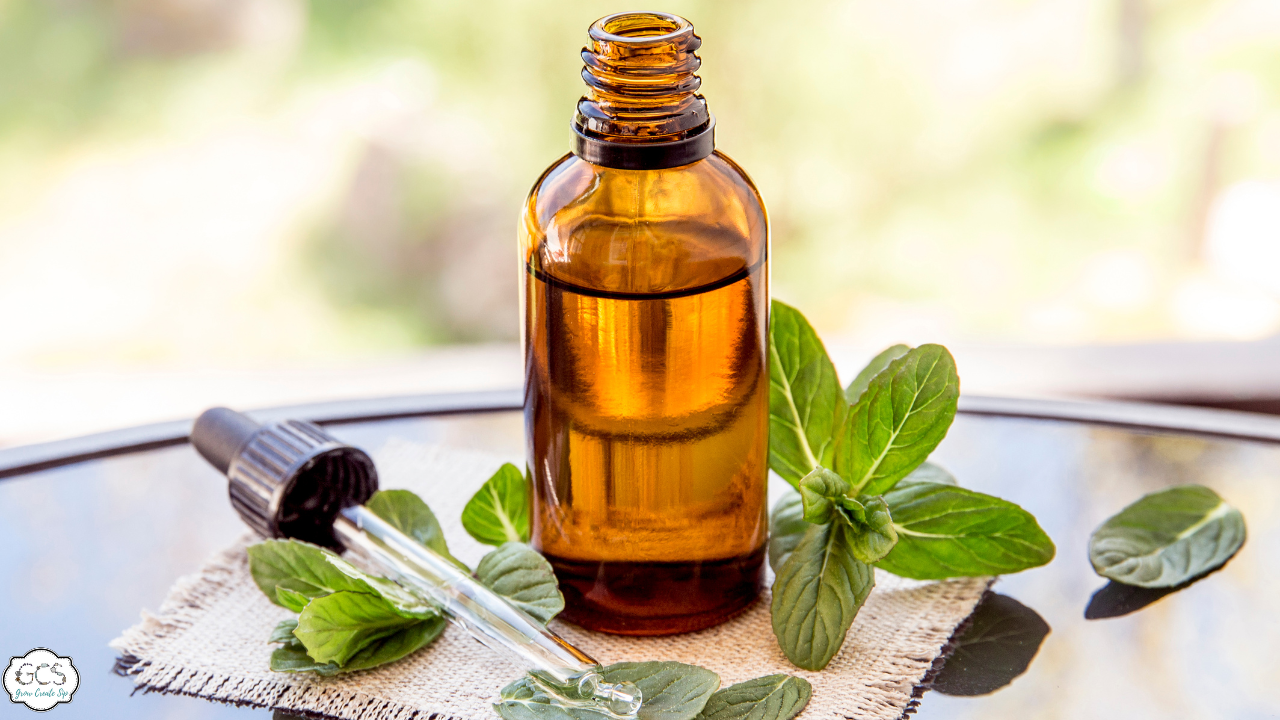
The Legal Stuff
The contents of this blog are made available via St. Fiacre's Farm LLC through Grow Create Sip and Farmhouse Teas and are for informational purposes only. This blog does not constitute medical advice; the content is not intended to be a substitute for professional medical advice, diagnosis, or treatment. Always seek the advice of a qualified healthcare provider with any questions you may have regarding a medical condition. If you think you may be suffering from any medical condition, you should seek immediate medical attention. You should never delay seeking medical advice disregard medical advice or discontinue medical treatment because of information provided by St. Fiacre's Farm, Farmhouse Teas or Grow Create Sip. Reliance on any information provided by this webinar is solely your own risk. St. Fiacre's Farm LLC (along with Farmhouse Teas and Grow Create Sip) is a participant in the Amazon Services LLC Associates Program, an affiliate program designed to provide a means for our team to earn fees for recommending our favorite products! Along with additional affiliate programs not associated with Amazon. We may earn a small commission, at no additional cost to you, should you purchase an item after clicking one of our links. Thanks for supporting us!
Tincture Basics: Understanding the Fundamentals
What are Tinctures?
Tinctures are liquid extracts that capture the medicinal properties of herbs through a process of maceration and extraction. Unlike other forms of herbal preparations, tinctures offer concentrated and easily-absorbed doses of the active compounds found in plants. This makes them an effective and convenient option for addressing various health concerns especially with herbs that don’t particularly taste great as tea.
Benefits of Using Tinctures
Compared to other herbal preparations, tinctures offer several advantages. They have a long shelf life, making them a reliable option for long-term use. Tinctures are also versatile, so that you can use them for internal use, topical applications, and even culinary use. Think of vanilla extract and alcoholic bitters. Additionally, tinctures can be easily customized to suit individual needs, providing a personalized approach to herbal remedies not found in standard tinctures at the store.
Types of Tinctures
There are several different ways that tincture are made. Alcohol-based tinctures are the most common, as alcohol effectively extracts the active compounds from herbs and acts as a preservative. However, for those who prefer alcohol-free options, non-alcoholic tinctures made with glycerin or vinegar are also available. Glycerin-based tinctures are sweet and preferred by children as well as those who prefer not to consume alcohol, while vinegar tinctures offer a tangy quick infused alternative. The choice of tincture type depends your personal views and needs regarding alcohol, the needs of the individual herbs when being extracted and the overall end result desired. We will dive into those details a bit later.
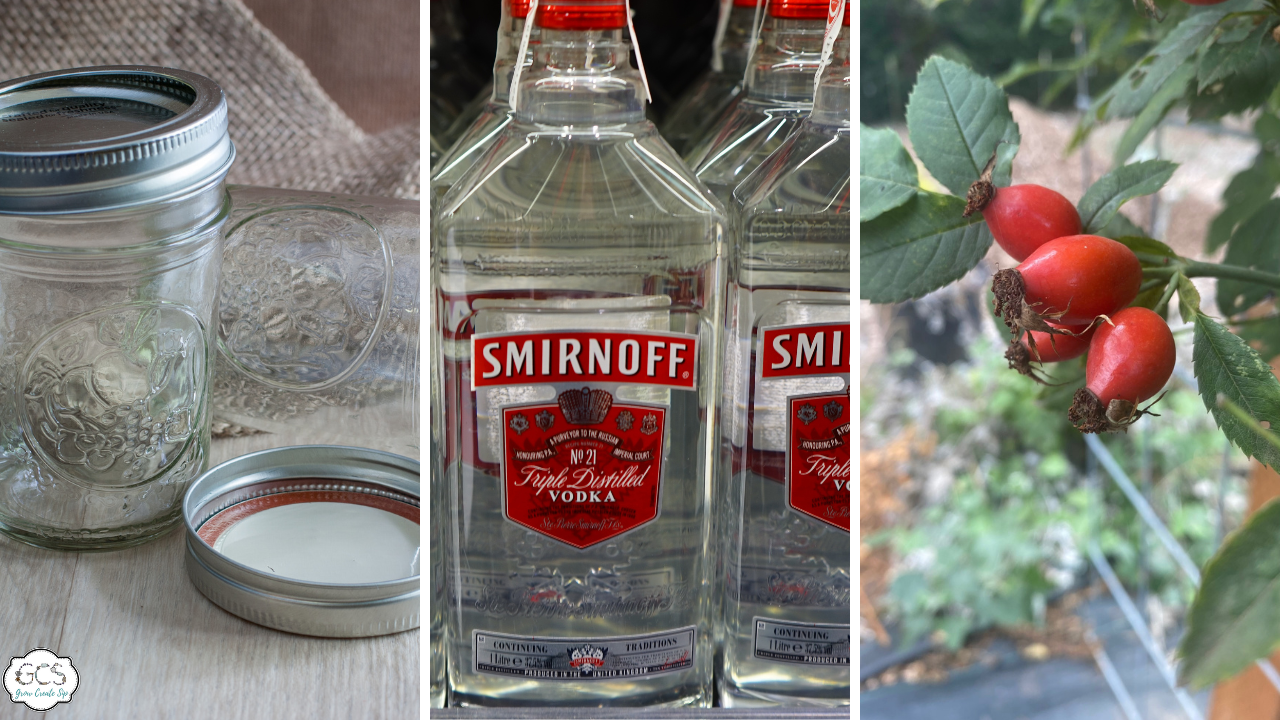
Supplies for Making Herbal Tinctures
To make herbal tinctures at home, you will need a few essential supplies. Here's a list of what you'll need:
- Glass Jars or Bottles: Choose glass jars or bottles with tight-fitting lids for storing your tinctures. Glass is preferred over plastic as it is non-reactive and helps maintain the integrity of the tincture. Select jars or bottles in various sizes to accommodate different herb quantities. Amber and cobalt jars are preferred but not absolutely necessary.
- Herbs: Of course, you'll need the herbs themselves. Whether you're using dried herbs or fresh ones, ensure they are of high quality and free from contaminants. It's best to use organic herbs whenever possible to avoid exposure to pesticides or other harmful substances. We dive deeper into ideal herbs later on.
- Alcohol: Alcohol is used as a solvent to extract the active compounds from the herbs. High-proof alcohol, such as vodka or grain alcohol, is commonly used for tincture making. Make sure the alcohol you choose is at least 40% (80 proof) to effectively extract the medicinal properties of the herbs.
- Labels and Markers: Labels are essential for proper identification of your tinctures as well as ensuring the safety of use. Use waterproof labels or write directly on the bottle with a permanent marker. The wrong tincture at the wrong time or for the wrong person could turn into sickness rather than health.
Having these supplies on hand will make the process of making herbal tinctures easier and more efficient. Remember to store your supplies in a clean and organized place to maintain their quality and to be able to find them when you need them. It makes creating your own tinctures that much more simple and fun!
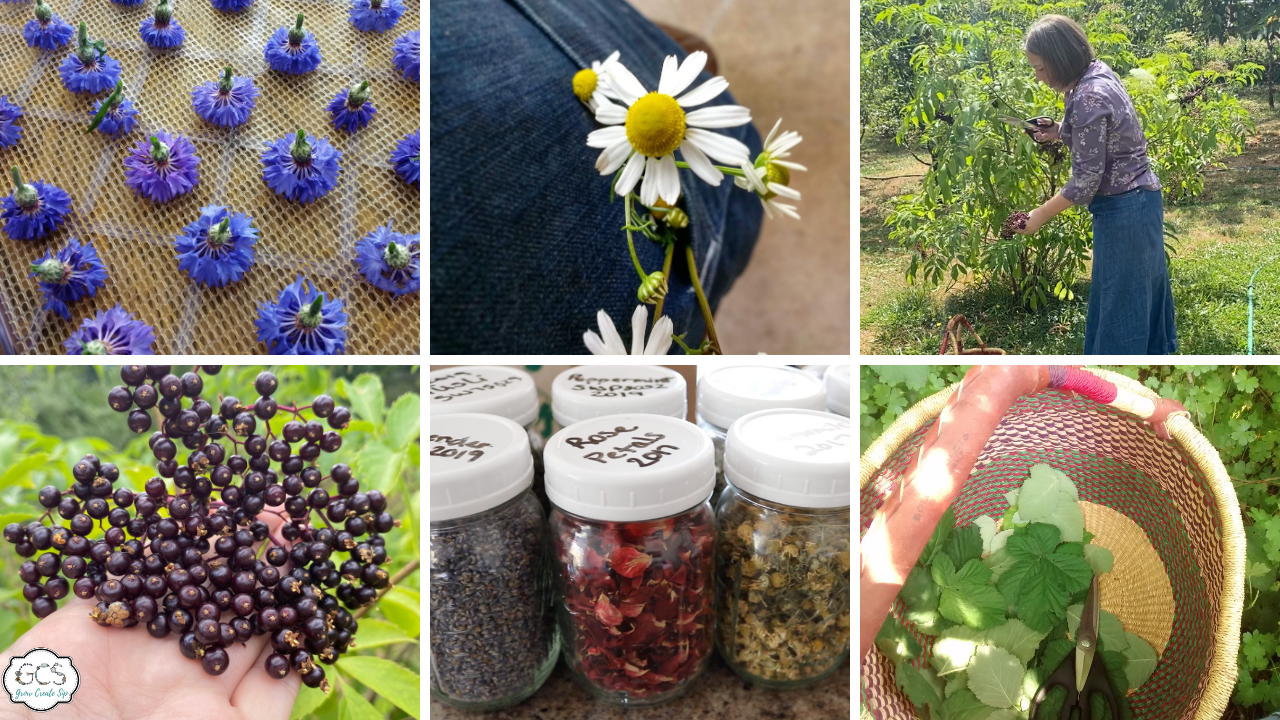
Choosing the Right Herbs for Your Tincture Recipes
Popular Herbs for Tincture Making and Their Properties
When selecting herbs for your tincture recipes, it's essential to consider their specific properties and benefits. Some popular herbs for tincture making include:
- Chamomile: Known for its calming and soothing properties, chamomile is often used for relaxation and sleep support as well as calming the digestive system.
- Echinacea: A powerful immune booster, echinacea is often used as support before or during a cold or during an infection.
- Lavender: With its calming aroma, lavender tinctures can promote relaxation and relieve stress and anxiety.
- Peppermint: Known for its refreshing and invigorating properties, peppermint tinctures can help alleviate stomach discomfort and promote healthy digestion. As well as be used for headache support.
Different Herbs Have Different Functions
God created each herb with unique benefits and properties just like He created different people with different skills and talents. For example, St. John's Wort is well-known for its mood-boosting properties, making it an excellent choice for tinctures aimed at supporting mental health and minor depression. On the other hand, ginger is known for its anti-inflammatory and digestive properties, making it ideal for tinctures targeting digestive issues or nausea and even pain. By understanding the specific benefits of different herbs, you can create tincture recipes tailored to your family's needs. In order to keep track of all of these wonderful benefits, because there are so many, I use a homemade materia medica journal.
Tips for Selecting Fresh or Dried Herbs
When making tinctures, the choice between using fresh or dried plant material can huge impact the proportions and potency of the final product. Consider these tips when it comes to plant material proportions:
- Fresh Plant Material: Using fresh plant material in tincture preparation can provide a vibrant and potent extract. The general rule of thumb when using fresh plant material is to fill the jar about 2/3 full. This allows room for the plant material to expand when it absorbs the alcohol. Fresh herbs contain a higher water content, which can dilute the alcohol concentration in the tincture. As a result, a higher alcohol percentage (around 95% or 190 proof) is often recommended when using fresh herbs to ensure proper extraction.
- Dried Plant Material: Dried herbs are commonly used in tincture making due to their longer shelf life and concentrated properties. When using dried plant material, you can fill the jar about 1/3 to 1/2 full. The reduced volume accounts for the fact that dried herbs are more concentrated than their fresh counterparts. Since dried herbs have less water content, a lower alcohol percentage (around 40-60% or 80-120 proof) is typically sufficient for extraction.
- Specific Herbal Properties: Also consider if the specific herb you are wanting to use is best suited for a higher or lower alcohol level. Extracting fresh calendula flowers, ginger root, and St. John's Wort flowers as tinctures preserves their colors, essential oils, and active compounds for potent and effective extracts. However, plants like echinacea, valerian, and mushrooms are not recommended for fresh tincturing due to their high water content or volatile compounds. It is best to use dried forms of these plants. Research each plant via a Materia Medica for the specific infusion recommendations.
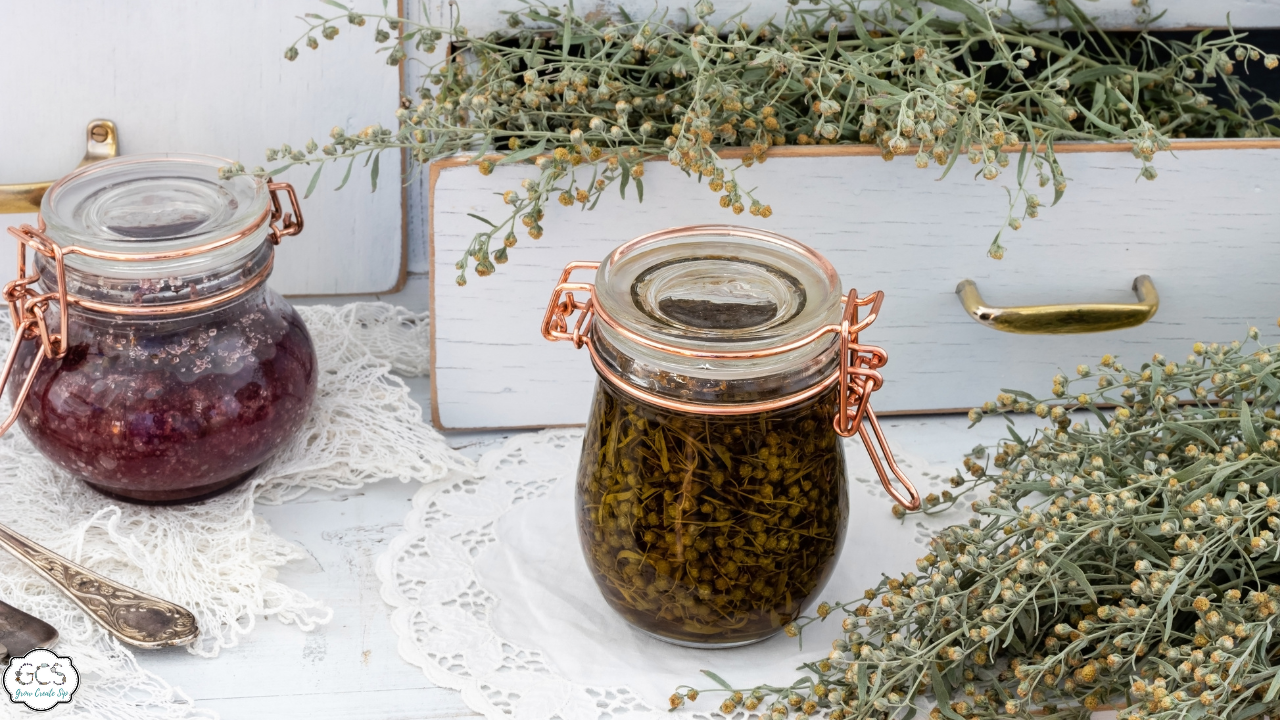
Percolation Method of Tincturing Herbs: The Scientific Method
The Percolation Method of tincturing herbs involves a systematic process where the solvent (usually alcohol) is continuously dripped or percolated through a packed column of herbs. This method allows for efficient extraction of the desired constituents from the herbs. The main advantage of this method is its ability to produce a highly concentrated and potent tincture in a shorter period of time. It is also considered more precise and consistent as it allows for better control over the extraction process.
However, the percolation method requires specialized equipment and can be more time-consuming during the preparation and clean-up stages. Additionally, some argue that the percolation method may result in the loss of certain volatile constituents due to prolonged exposure to the solvent and air. Since I’m not a scientific type this is not my preferred method but I’ll share the method I love most with you!
Folk Method of Tincturing Herbs: The Artistic Method
The Folk Method of tincturing herbs is a more traditional and flexible approach. In this method, herbs are typically macerated or soaked in a solvent (such as alcohol or glycerin) for a period of time, allowing the constituents to be extracted. It allows for variations in the ratio of herbs to solvent and the duration of the maceration process, resulting in a tincture that may better capture the essence of the plant. However, the folk method is said to lack precision and consistency in terms of potency and dosage. It may also require a longer maceration period to achieve desired extraction levels.
Overall, either method will get you some wonderful natural medicinal benefits. It is mostly a matter of style and preference and also dependant on the equipment that you have on hand. I’ll share more about the folk method details in this post.
Ensuring Proper Herb-to-Liquid Ratios for Desired Tincture Potency
The herb-to-liquid ratio plays a crucial role in determining the potency of your tinctures. A general guideline is to use a 1:4 to 1:10 ratio, meaning one part herbs to four to ten parts liquid. However, you can adjust this ratio based on personal preference and the desired strength of your tincture. Keep in mind that a higher herb-to-liquid ratio will result in a more potent tincture, while a lower ratio will yield a milder tincture. And again, this may be herb dependent, please have your materia medica for the plant you intend to use handy when creating a tincture.
Tincture Alcohol Percentages
When preparing tinctures, the choice of alcohol and its percentage is an important consideration. The alcohol serves as the solvent that extracts the active compounds from the herbs. Here are some key points to understand about tincture alcohol percentages:
- Percentage vs. Proof: Alcohol content in tinctures is often measured in both percentages and proof. The percentage refers to the volume of alcohol in the tincture compared to the total volume of liquid. For example, a tincture with 40% alcohol means that 40% of the total volume is alcohol. On the other hand, proof is a measurement system commonly used in the United States, where proof is twice the percentage. So, a tincture with 40% alcohol would be 80 proof.
- Minimum Alcohol Percentage: To ensure effective extraction, a minimum alcohol percentage of 40% (or 80 proof) is generally recommended. This percentage is considered sufficient for extracting a wide range of medicinal compounds from the herbs. However, some herbs may require a higher alcohol percentage for optimal extraction.
- Finding the Right Alcohol Level: Determining the ideal alcohol percentage for a specific herb can be based on research, tradition, or guidance from other experienced herbalists. Herbal resources and reputable sources often provide recommendations for alcohol percentages for various herbs. It's essential to consider the solubility of the herb's active compounds and the desired potency when deciding on the alcohol level.
It's important to note that the alcohol percentage in tinctures should not be confused with the final alcohol content in a dosage. When taking tinctures, the alcohol is typically diluted in water or another beverage, resulting in a significantly lower alcohol concentration per dose.
Alcohol Solubility of Dried Herbs, Fresh Herbs, and Resins
Understanding the alcohol solubility of different types of herbal materials is crucial when preparing tinctures. Here's a breakdown:
- Dried Herbs: Dried herbs generally have a higher concentration of active compounds compared to fresh herbs due to the removal of water during the drying process. Dried herbs tend to have good alcohol solubility, allowing for effective extraction. Alcohol strengths ranging from 40-60% (80-120 proof) are commonly used for tincturing dried herbs. Some dried herbs, especially those with tougher plant materials like roots and barks, may require higher alcohol strengths (50-60% or 100-120 proof) to ensure optimal extraction of their medicinal properties.
- Fresh Herbs: Fresh herbs contain a higher water content, which can dilute the alcohol concentration in tinctures. As a result, a higher alcohol strength is often recommended when tincturing fresh herbs. Alcohol strengths of around 95% (190 proof) are commonly used to compensate for the higher water content and ensure effective extraction of the herbs' active compounds. Delicate fresh herbs, such as flowers or leaves, may be adequately extracted with lower alcohol strengths (40-50% or 80-100 proof).
- Resins: Resins, derived from plants like tree barks or gum resins, have unique solubility properties. Frankincense, myrrh, and benzoin are resins that are commonly tinctured. Resins are often less soluble in alcohol compared to dried or fresh herbs. Higher alcohol strengths, such as 60-95% (120-190 proof), are typically required to effectively dissolve and extract the medicinal compounds from resins. Additionally, techniques like heat extraction or prolonged soaking may be necessary to enhance the solubility of resins in alcohol.
Alcohol Proofs for Specific Herbs in Tincture Making

Infusion Times for Tincture Making
When making tinctures, the infusion times can vary depending on various factors such as the type of herb, its form (dried or fresh), and the specific plant part being used. Here are some general guidelines for infusion times based on different herb categories:
- Roots and Barks: For herbs like burdock root or cinnamon bark, which tend to have more concentrated compounds, a longer infusion time is typically required. Infusing these herbs for four to six weeks allows for optimal extraction of their beneficial properties.
- Leaves and Flowers: Herbs such as chamomile flowers or peppermint leaves often have lighter and more delicate compounds. Infusing these herbs for two to four weeks is usually sufficient to extract their desired properties effectively.
- Resins and Gums: Herbs like myrrh resin or frankincense gum tend to have sticky or solid forms. It is recommended to infuse these herbs for a longer period, around four to six weeks, to ensure proper extraction of their resinous compounds.
- Dried vs Fresh Herbs: The moisture content in fresh herbs can affect the infusion process. If using fresh herbs, it is generally advisable to double the infusion time compared to dried herbs. For example, if a recipe suggests infusing dried lavender flowers for two weeks, fresh lavender flowers may require around four weeks for optimal extraction.

Alcohol vs. Non-Alcohol Tincture Recipes
When making tinctures, you have the option to choose between alcohol-based and non-alcoholic versions (glycerine and vinegar). Alcohol-based tinctures are the most common and widely used because of their effectiveness in extracting and preserving the medicinal properties of herbs. However, some individuals may prefer non-alcoholic alternatives due to personal preferences, dietary restrictions, or religious reasons.
Advantages and Limitations of Each Type
Alcohol-based tinctures offer several advantages. Alcohol is an excellent solvent that effectively extracts the active compounds from herbs, resulting in potent tinctures. Also, alcohol acts as a preservative, increasing the tincture's shelf life. On the other hand, non-alcoholic tinctures, such as glycerin-based or vinegar-based options, provide alternatives for those who cannot or choose not to consume alcohol. Glycerin-based tinctures are often sweeter in taste and can be suitable for children or individuals with specific dietary restrictions. Vinegar-based tinctures like Fire Cider are fast and simple but have limitations on what they can extract.
Recipes for Alcohol-Based Tinctures
To create alcohol-based tinctures, you will need a high-proof alcohol (as mentioned above), such as vodka, rum, or brandy. The alcohol acts as a solvent, extracting the medicinal properties from the herbs. Common alcohol-based tincture recipes include:
- Calendula Tincture: Known for its soothing and healing properties, calendula tincture can be used topically for skin conditions or internally for digestive health.
- Lemon Balm Tincture: Lemon balm tincture is known for its calming and mood-boosting effects. It can be used to alleviate stress, anxiety, and promote better sleep. I always say, lemon balm brings calm!
- Valerian Root Tincture: Valerian root tincture is a popular choice for promoting relaxation and aiding in sleep. It can be beneficial for individuals experiencing insomnia or restlessness. Do not take while operating a motor vehicle or equipment.
Recipes for Non-Alcoholic Tinctures
Glycerin-based tinctures are sweet and can be more palatable, making them a great option for children or individuals with a sensitive palate. Vinegar-based tinctures offer a tangy flavor and can provide additional health benefits. Some recipes for non-alcoholic tinctures include:
- Elderberry Glycerin Tincture: Elderberry tincture made with glycerin is a popular choice for immune support. It can help boost the immune system and protect against colds and flu. Grab elderberries and glycerin here to make your own.
- Fire Cider Vinegar Tincture: Fire cider vinegar tincture is a spicy and invigorating option that combines various herbs, spices, and apple cider vinegar. It is commonly used as a natural remedy for colds, congestion, and digestion. Read more here about Fire Cider.
Sourcing Clean, Pure and Organic Alcohol for Tinctures
To source pure, organic grain alcohol for making herbal extracts, consider checking local specialty liquor stores or distilleries for high-proof grain alcohol suitable for tincture making. Look for brands offering organic or certified pure grain alcohol intended for consumption. Online retailers specializing in organic and natural products can also be explored, ensuring detailed information about sourcing, production methods, and certifications.
Prioritize purchasing from trusted sources that prioritize organic and regenerative farming practices to ensure the purity and quality of the grain alcohol used for herbal extracts. We don’t want any chemicals in our alcohol that are not suppose to be there! The quality of the alcohol is as important as the quality of your herbs.

How to Bottle Your Homemade Tinctures
- Prepare the Bottles: Start by sterilizing your glass bottles and dropper caps. You can do this by washing them with hot, soapy water and rinsing thoroughly. If desired, place them in boiling water for about 10 minutes for sterilization. Allow the bottles and caps to air dry completely before use.
- Transfer the Tincture: Once your tincture has finished infusing, strain out the herbs using a fine mesh strainer, french press or cheesecloth. Carefully pour the tincture into your sterilized glass bottles, leaving a small amount of headspace at the top. If needed, use a funnel to avoid any spills or waste. Seal the bottles tightly with the sterilized dropper caps.
- Remember to label each bottle. Storing your tinctures in a cool, dark place can help maintain their potency and extend their shelf life.
Labeling DIY Tinctures
Labeling your DIY tinctures is crucial for easy identification and safe usage. Here's how you can ensure clear and informative labels:
- Name and Date: Begin by clearly stating the name of the herb or herbal blend on the label. This helps you quickly identify the tincture you need without confusion. Include the latin name as well. Additionally, include the date of preparation to keep track of its freshness and potency.
- Dosage Instructions: Provide dosage instructions on the label to ensure proper usage. Include the recommended amount of tincture to take, whether it's in drops or milliliters. If applicable, mention any specific frequency or timing for consumption.
- Additional Information: Depending on the herb, you may want to include additional information on the label. This can include any precautions, contraindications, or potential side effects associated with the herb. If your tincture is part of a specific recipe or remedy, you can mention its intended purpose or benefits.
- Ingredients and Alcohol Percentage: List all the ingredients used in the tincture, especially if it's a blend of multiple herbs. Additionally, mention the alcohol percentage and type of alcohol or solvent.

Step-by-Step Guide: Making a Basic Tincture
We took a deep dive into the details of what tincture is, why we may want to use it, how to pick the right herbs be those fresh or dried and we chatted about alcohol types and non-alcoholic options.
While all of that is important information, let’s break it down into a simple step-by-step guide so you can make your own DIY herbal tinctures at home. A checklist of sorts!
▢ Step 1: Selecting the Right Herbs
Choosing the right herbs is crucial for creating effective tinctures. Consider the specific properties and benefits of different herbs, such as chamomile for relaxation or echinacea for immune support. Whether you opt for herbs from your garden or trusted suppliers, ensure they are fresh or properly dried for optimal potency.
▢ Step 2: Preparing Herbs and Choosing the Liquid
Properly preparing the herbs and selecting the appropriate liquid is essential for extracting the medicinal properties. Roughly chop or grind the herbs to increase their surface area, allowing for better extraction. Depending on the type of tincture you're making, choose alcohol, glycerin, or vinegar as the liquid. Each has its own unique qualities and benefits.
▢ Step 3: Combining Herbs and Liquid for Extraction
Combine the herbs and liquid in a glass jar, ensuring that the herbs are fully submerged. The herb-to-liquid ratio depends on the desired potency, typically ranging from 1:4 to 1:10. Seal the jar tightly and give it a gentle shake to evenly distribute the herbs. Label the jar with the herb name, liquid used, and the date of preparation.
▢ Step 4: The Maceration Process and Time Requirements
Place the sealed jar in a cool and dark location, allowing the herbs to macerate in the liquid. The maceration time varies depending on the herb and desired potency, typically ranging from a few weeks to several months. Shake the jar gently occasionally during this period to promote extraction. The longer the maceration, the stronger and more potent the tincture will be.
▢ Step 5: Straining and Storing the Finished Tincture
Once the desired maceration time has passed, it's time to strain the tincture. Use a fine-mesh strainer or cheesecloth to separate the liquid from the herb solids, ensuring a smooth and clear tincture. Squeeze out as much liquid as possible from the herbs. Transfer the strained tincture into a dark glass bottle for storage. Label the bottle with the tincture name, ingredients, and date of preparation. Store it in a cool, dark place to maintain its potency.
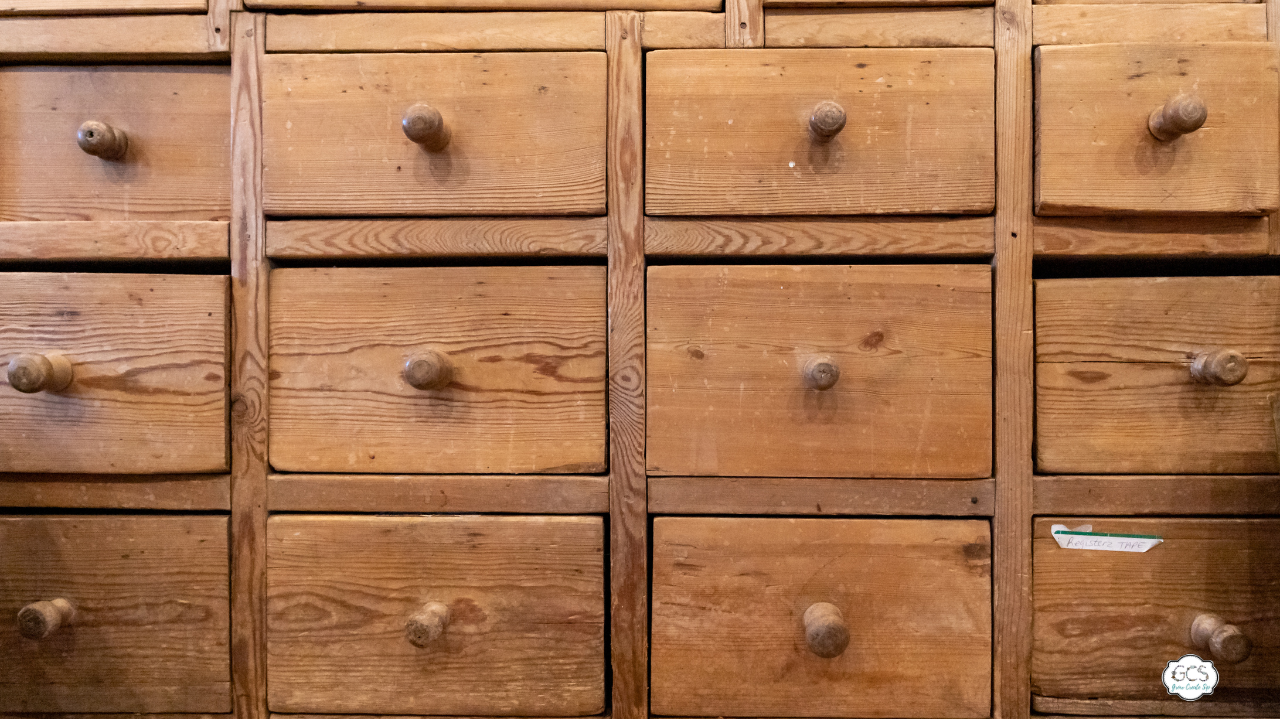
Storing and Using Tinctures: Best Practices and Shelf Life
Proper Storage Techniques to Maintain Potency
Not all of us have a special apothecary cabinet to store our tinctures are in but there are some tips you can keep at hand no matter what your storage space looks like to ensure the longevity and potency of your tinctures. So whether you store them in a kitchen cabinet, bathroom cabinet, in a special buffet or in plastic storage containers here are some best practices to follow:
- Store tinctures in dark glass bottles to protect them from light, which can degrade their potency.
- Keep tinctures in a cool, dark place to prevent exposure to heat and sunlight.
Shelf Life and Expiration of Tinctures
The shelf life of tinctures can vary depending on the herbs used and the type of solvent used for extraction. Alcohol-based tinctures typically have a longer shelf life, often ranging from 3 to 5 years. Non-alcoholic tinctures, such as glycerin-based or vinegar-based options, may have a shorter shelf life, typically around 1 to 3 years. Though many herbalists have had tinctures for a decade or more that are still potent enough to get results from.
It's important to note that tinctures may gradually lose their potency over time. To ensure the best quality, it's recommended to use tinctures within their specified shelf life. If you notice any changes in color, odor, or taste, it may indicate that the tincture has expired and should be discarded. Especially if mold should appear.
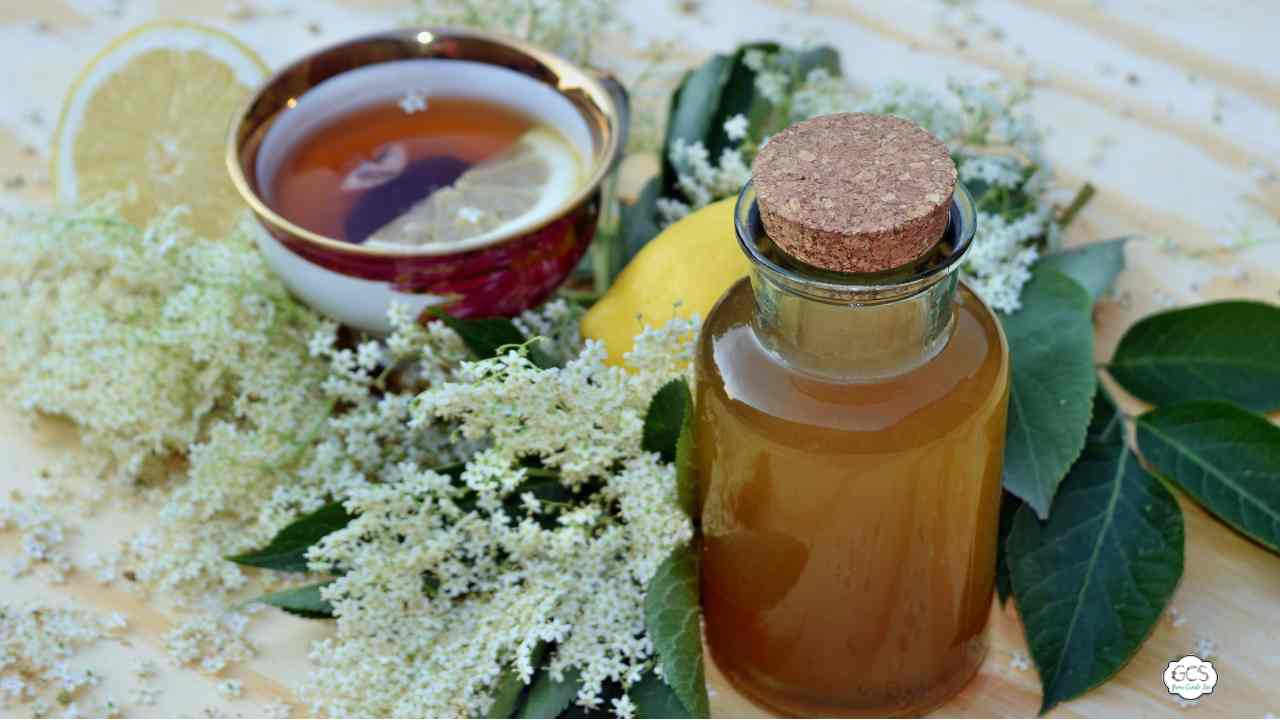
Incorporating Tinctures into Daily Routines
Incorporating tinctures into your daily routine can be as simple as adding a few drops to your favorite herbal tea, morning beverage or taking them directly under the tongue. Here are some tips for incorporating tinctures into your daily routine:
- Add a few drops of your chosen tincture to a cup of herbal tea or water.
- Mix tinctures into smoothies or juices for an added health boost.
- Take tinctures directly under the tongue for quick absorption into the bloodstream.
Tips for Determining Tincture Dosage
Determining the appropriate dosage for tinctures can vary depending on the herb and individual needs. It's always recommended to start with a small dosage and gradually increase if needed. You can refer to herbal resources, consult with a qualified herbalist, or follow dosage instructions provided by reputable sources. Keeping Materia Medica’s on hand from other herbalists or one like this that you created yourself is a must regarding herbal dosages.
Frequently Asked Questions about Tinctures
What is a tincture used for?
A tincture is used for gathering the medicinal properties of herbs for various purposes, such as promoting health and addressing specific health concerns.
Is a tincture alcoholic?
Yes, a tincture is typically made by extracting the active compounds from herbs using alcohol as the solvent. Though some tinctures are made from glycerine and vinegar which are not alcoholic.
Do you swallow or spit out a tincture?
Tinctures are usually swallowed, as they are meant to be ingested for their medicinal effects. Though some tinctures are used externally on the skin or a wound.
Can tinctures make you drunk?
Tinctures are typically consumed in small doses (30 or so drops), so they are unlikely to make you drunk unless consumed excessively.
Can you drink a tincture directly?
Yes, tinctures can be consumed directly, either by adding them to a beverage or taking them as is. It is recommended to put them under the tongue or in a liquid to keep from burning the throat.
Why are tinctures placed under the tongue?
Tinctures can be placed under the tongue for sublingual absorption, allowing for faster absorption of the active compounds into the bloodstream.
How long do homemade tinctures last?
When stored properly, homemade tinctures can last for 1 to 5 years or more, retaining their potency and efficacy.
Is alcohol or vinegar better for tinctures?
Alcohol is commonly used for tinctures due to its superior ability to extract and preserve the medicinal compounds from herbs. Vinegar is occasionally used for specific herbal preparations but does not extract as much of the herbal compounds.
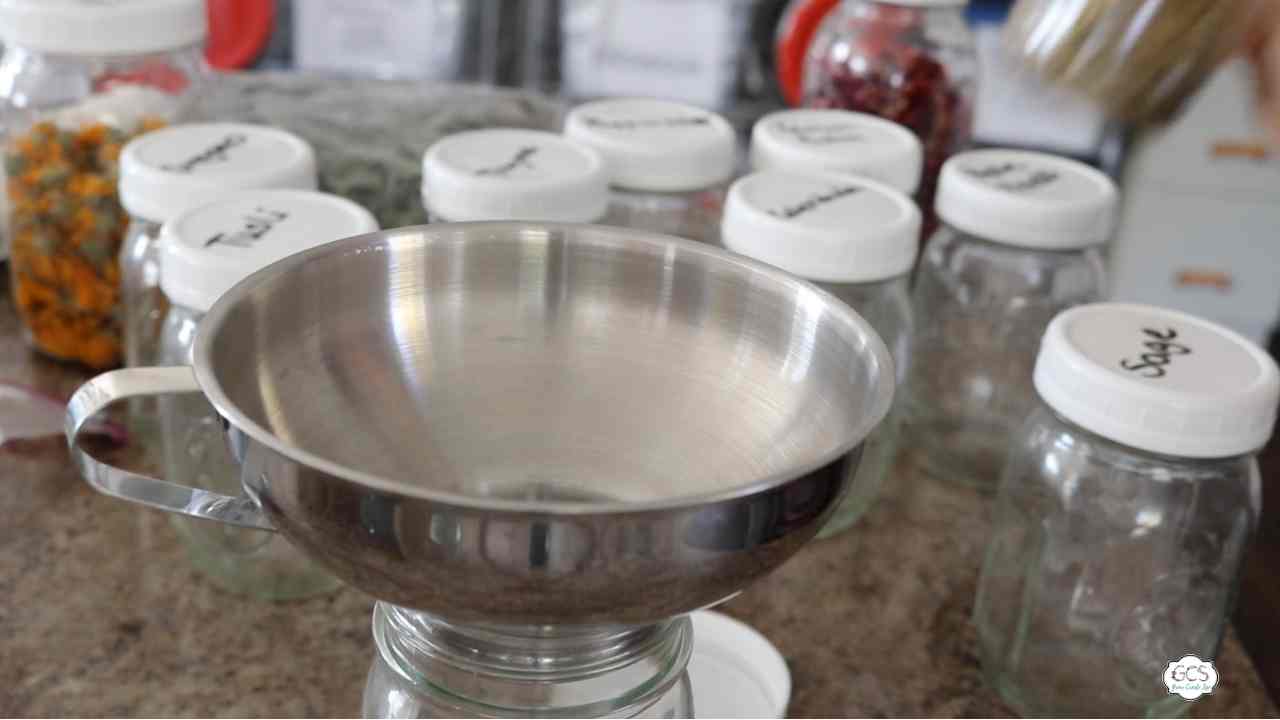
It’s Time to put Your Tincture Knowledge to Work
Making your own tinctures can be a rewarding and empowering experience. By gathering all the goodness that God put into the properties of the herbs, you can create potent remedies to support your health from the ground up. Whether you're seeking stress relief, digestive support, or immune-boosting effects, tinctures offer a convenient and effective way to incorporate herbal remedies into your daily routine.
I would love to invite you to our private group of home herbalists just like you! We share tips and tricks with each other for making different homemade herbal remedies in a private facebook-like chat group along with a library of herbal monographs that make up a fabulous Materia Medica right at your fingertips. It is search able and printable, with dosages, how to grow the plants, dry them and prepare them. There are over 70 different herbs included and a video library of how to make various herbal remedies. Come visit the Herbal Studio & Communi-Tea here and find out what we are all about.
Before you go though, I’d love to know, what is the first tincture that you are going to make? Or which tinctures have you made before or used the most? Let me know down in the comments below. I can’t wait to see what everyone shares!
Learn More About other Herbal Remedies
- Elderberry Syrup vs Elderberry Tincture
- Natural Remedies for Arthritis and Joint Pain
- How to Make Herb Infused Oils
- Home Apothecary Labeling Tips & Free Labeling Template
- Most Affordable and Productive Medicinal Plants to Grow
- Fire Cider Benefits & Protocol
